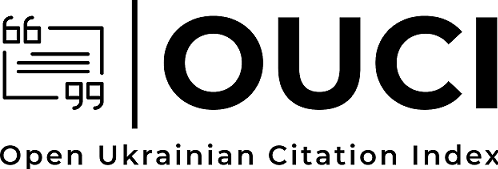ROMANIAN DIPLOMACY IN THE STRUGGLE FOR BESSARABIA AT THE PARIS PEACE CONFERENCE (JANUARY — MAY 1919)
DOI:
https://doi.org/10.28925/2524-0757.2017.22Keywords:
The Paris Peace Conference, Bessarabia, the Entente, diplomacy, “Great Romania”.Abstract
The purpose of the article is the analysis of the activities of the Romanian representation at the Paris Conference during January-May 1919. The tasks are to characterize the content of the work of the Romanian diplomats in the direction of the defending the rights to Bessarabia and the determination of the position of the Entente as for the territorial independence of the region. The Romanian government realized that only the “permission” of the Entente would strengthen its presence in the region. Instead, the Entente treated ambiguously towards such aspirations of Romania. For the first, it was not forgotten for Bucharest the separate peace with the Fourth Alliance in 1918. For the second, the Entente did not take the politics of the terror of Romanian in Bessarabia. For the third, in January, 1919 the uprising began in Khotyn, which was greatly undermined the “figure of Romania as the peacemaker” in the region. The fourth factor was that the private leaders of the Entente who are maintained the White Guards and are defended the need for the rebirth of the integrity of Russia. From the first days of the being in Paris, the Romanian diplomats were sounded actively the question how the leaders of the Entente would see the future status of Bessarabia. At the same time, they realized that the situation was difficult for them. The Romanians were not included in the Supreme Soviet of the Conference and to the number of the special commissions. Besides, the fears were confirmed that the Entente would perceive doubtfully the annexation of Romania of the number of the territories. In additional facts of the influence to the position of the leaders of the conference were the representatives of the White Guards and the delegation of the UNR, which were proved the baselessness of the claims of Bucharest to Bessarabia. On the other hand, the Entente cannot ignore the Romanians, the Entente could not, because the last, like as the Poles, created the “sanitary border” for lands which were covered up the war as the past Russian Empire. In addition, it was they who had to become the counterbalance to Germany. The important factor was the fact that at that time, the Bolshevik’s slogans were surrounded actively in Europe which were called for the “world revolution”. Instead of it, Romania took on the anti-Bolshevik position, which was constantly underlined, its representatives in Paris, and it was the strong argument for its use with the inclusion to the structure of the kingdom of the new territories, including Bessarabia.
Downloads
References
Bule, B. (2012). Obraz rumynskoi administratsii i nastroieniia naseleniia Bessarabii, otrazhennyie vo frantsuzskikh diplomaticheskikh i razvedyvatelnykh otchetakh 1918–1920 gg. International Historical Journal, 2. 49–54 (in Moldovian).
Vlasenko, V. (2008). Dokumenty i materialy Nadzvychaynoi dyplomatychnoi misii UNR v Rumunii (1919–1923). Attractions: archeographical yearbook, 8, 129–160 (in Ukrainian).
Za balkanskimi frontami Pervoi mirovoi voiny (2002). In edit. by B. Vinogradov. Moskva, Indrik, 504 p. (in Russian).
Kovalchyk, M. (2010). Vidnosyny Rumunii z uriadom Ukrainskoi Narodnoi Respubliky v 1919 r. Ukrainian Historical Journal, 4, 115–127 (in Ukrainian).
Levit, I. (2012). Bessarabskii vopros v kontekste mezhdunarodnykh otnoshenii (1919–1920 gg.). Parizhskaia mirnaia konferentsiia. Teraspol, Litera, 240 p. (in Russian).
Meltiukhov, M. (2010). Bessarabskii vopros mezhdu mirovymi voinami 1917–1940. M., Veche, 464 p. (in Russian).
Nazariia, S. (2012). Mezhdunarodnyie otnosheniia v epokhu mirovykh voin: fakty i mifologiia. Kishiniov, 655 p. (in Moldovian).
Nazariia, S. (2014). Pozitsiia Zapadnykh derzhav v bessarabskom voprose na Parizhskoi mirnoi konferentsii. https://ava.md/2014/01/21/poziciya-zapadnyh-derzhav-v-bessarabskom/
Popenko Ya. (2008). Perehovory mizh UNR ta frantsuzkym viiskovym komanduvanniam v Odesi u lystopadi 1918 — berezni 1919 r. Historical Journal, 3, 86–97 (in Ukrainian).
Popenko Ya. (2016). Rumuniia na shliakhu do Bukharestskoho myru 1918 roku. Eminak: scientific quarterly, 2, 53–59 (in Ukrainian).
Rumuniia: istoki i sovremennoie sostoianiie vneshnepoliticheskogo pozitsionirovaniia gosudarstva. (2013). In edit. by Kyrtova, A. A. M, RUSU, 102 p. (in Russian).
Yastrebchak, B. (2011). Fenomen «Velikoi Rumynii» i rumynskaia diplomatiia v gody Pervoi mirovoi voiny. M., RUSU, pp. 21–33 (in Russian).
Brătianu, Gh. I. (1995). Basarabia. Drepturi naţionale şi istoice. Bucureşti. 148 p. (in Romanian).
Contele De Saint-Aulaire. (2016). Însemnările Unui Diplomat de Altădată în România. 1916–1920 / Traducatori : Ileana Sturdza. 288 p. (in Romanian).
Le Temps. 20.02.1919. http:http://gallica.bnf.fr/ark:/12148/bpt6k2435615/f1.item
Le Temps. 20.01.1919. http:http://gallica.bnf.fr/ark:/12148/bpt6k243530r.item
Le Temps. 3.02.1919. http:http://gallica.bnf.fr/ark:/12148/bpt6k243544m.item
Le Temps. 30.03.1919. http:http://gallica.bnf.fr/ark:/12148/bpt6k2435997/f1.item
Le Temps. 4.02.1919. http:http://gallica.bnf.fr/ark:/12148/bpt6k2435450/f1.item
Le Temps. 6.03.1919. http:http://gallica.bnf.fr/ark:/12148/bpt6k2435751.item
Mitrasca, M. (2002). Moldova: A Romanian Province under Russian Rule. Diplomatic History From the Archives of the Great Powers. NY, Algors Publishing, 439 p. (in English).
Papers Relating to the Foreign Relations of the United States. The Paris Peace Conference. 1919. Volume III. Washington, 1943. 1062 p. (in English).
Published
How to Cite
Issue
Section
License
Copyright (c) 2018 Kyiv Historical Studies

This work is licensed under a Creative Commons Attribution-NonCommercial-ShareAlike 4.0 International License.
Authors who publish in this journal retain the right of authorship of the work and give to the journal right of first publication of this work under the conditions of Creative Commons: Attribution-NonCommercial-ShareAlike 4.0 International (CC BY-NC-SA 4.0), which allows others freely distribute the work published with reference to the authors of the original work and the first publication of this magazine.














